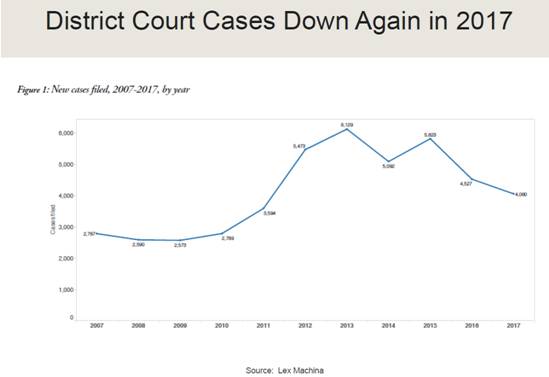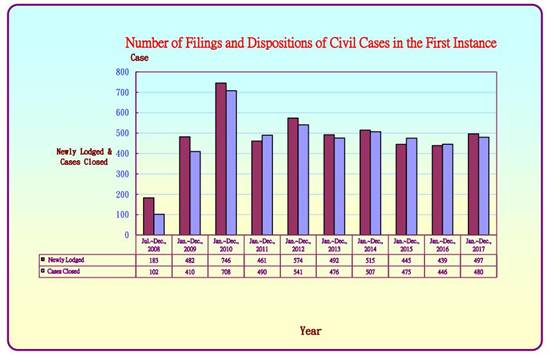|

From left: TILO chair James Yuan, Judge Hsiung Sung-mei and Matthew Bernstein; Photo: Conor Stuart
Recent years have seen dramatic changes in the US patent landscape, with landmark decisions reverberating through the legal framework. One of the biggest changes to the US patent system was the introduction of the inter partes review, as part of the America Invents Act in 2012, which has variously been praised as getting rid of “junk patents” and curbing patent trolls and criticized as creating “patent death squads”. Landmark US Supreme Court case Oil States Energy Services v. Greene’s Energy Group could even result in the inter partes review process being ruled unconstitutional. As the patent industry in Taiwan does not have the scale of its US counterpart and Taiwanese companies have traditionally been less litigious in terms of patents, it is sometimes difficult to make comparisons between the two systems, however, Taiwan is soon to introduce its own version of the inter partes review system, according to a March announcement by the Taiwan Intellectual Property Office (TIPO).
At a recent conference in Taiwan Perkins Coie LLC Managing Partner Matthew Bernstein, Taiwan Technology Industry Legal Officers Association chair James Yuan, KPMG consultant George Chen and Taiwan Intellectual Property Court judge Hsiung Sung-mei discussed recent developments in US patent law and how the same issues are dealt with in Taiwanese courts.
New patent suits filed in district court declined in 2017 in the US, falling from 4,527 to 4,060 (See Figure 1). Bernstein attributed this to a combination of factors, including the continuing impact of IPRs and the Alice decision. In Taiwan, new civil suits on first instance across all forms of intellectual property filed at the Taiwan Intellectual Property Court in Taiwan 2017 totaled only 497, a slight rise from 439 in 2016 (See Figure 2).

Figure 1: Number of new patent suits filed with district courts from 2007-2017;
Source: Lex Machina/Matthew Bernstein’s presentation.

Figure 2: The number of new IP cases filed and cases closed from 2008-2017;
Source: Intellectual Property Court
Patent Exhaustion
The US Supreme Court issued its opinion on Impression Products, Inc. v. Lexmark International, Inc. (hereafter Lexmark) in May of last year, reversing a previous Federal Court decision. The Supreme Court stated that an authorized sale of a product constituted automatic exhaustion of patent rights, regardless of post-sale restrictions and that patent exhaustion applies to products sold outside the US. The case involved ink cartridges sold by Lexmark at two different prices, depending on whether or not they could be reused. Impression bought these cartridges in the US and elsewhere and resold them in the US. Lexmark then sued Impression for patent infringement. Although the contract may be valid under contract law, the sales of the refilled cartridges by Impression did not constitute patent infringement according to the Supreme Court. They did however, differentiate between “licensing” and “sales”, and exhaustion does not apply to products that are licensed rather than sold.
Taiwan has relatively little case law relating to patent exhaustion.
Divided Infringement
Divided Infringement has been a continuing issue in US courts. Although the existing case law states that direct infringement can only take place if a patented invention is made, used, offered for sale, or sold within the United States or is imported to the United States or in the case of a method claim, that a single individual practices all of the steps of a method, an exception to this rule was provided for in the Federal Circuit en banc decision in Akamai v. Limelight in cases where there is joint infringement as follows:
- Where the entity directs or controls others’ performance; or
- Where the actors form a joint enterprise.
The former can be carried out in three ways:
- Through an agency relationship
- A contract with another to perform one of more of the method steps; or
- The alleged infringer conditions participation in an activity or receipt of a benefit upon performance of a method step and establishes the manner or timing of that performance.
Bernstein suggested that this was quite a high bar in terms of being able to prove joint infringement. However another Federal Circuit case, Travel Sentry v. Tropp has broadened the definition of conditioned participation, in a case which involved a company designing locks for luggage which could be opened by TSA agents, who gained increased efficiency from having access to the luggage without breaking the locks.
The Federal Court summarized this as follows, pointing to a measure courts can look to in judging similar cases:
“Evidence that a third party hoping to obtain access to certain benefits can only do so if it performs certain steps identified by the defendant, and does so under the terms prescribed by the defendant”.
Despite much debate in Taiwan over the possibility of introducing indirect infringement legislation, Taiwan has not, even though many of its neighbours, including China, Japan and South Korea all have. The reason for this, according to Judge Hsiung, is that after a 2009 conference on the subject, industry leaders expressed their opposition to the proposal, as Taiwanese industry is dominated by original equipment manufacturer (OEM) suppliers, which could lead to a lot of litigation against Taiwanese industry. Judge Hsiung stated that a peremptory search for indirect infringement on the published judgement site of the Ministry of Justice in Taiwan for indirect patent infringement threw up only 24 results. Most of these cases were dismissed on the basis that indirect infringement is not on the books in Taiwan. However, according to Judge Hsiung, not having the title “indirect infringement” on the books, does not mean that indirect infringement does not leave an infringer liable. Many cases fell down when it come to the ability to prove infringement. Of those who could prove infringement, some were dismissed for the inability to prove that there was direct infringement, as indirect infringement cannot exist without direct infringement. There are examples of successful cases, however. One of these was in a 2010 judgement made by Judge Hsiung herself (Civil Patent Infringement Suit 2010 No. 59 Link in Chinese). The plaintiff in the case was US-based Monolithic Power Systems, Inc. and the defendant was Taiwan-based Fitipower Integrated Technology Inc and it involved the use of microchips. Although there is no provision for indirect infringement in the Patent law, Hsiung stated that Article 185 of the Civil Code relates to joint liability for damage to the rights of others:
"If several persons have wrongfully damaged the rights of another jointly, they are jointly liable for the injury arising therefrom. The same rule shall be applied even if which one has actually caused the injury cannot be sure.
Instigators and accomplices are deemed to be joint tortfeasors."
This judgement was made as a result of arguments by the late lawyer Fan Hsiao-ling, who was one of the attorneys arguing the case, according to Judge Hsiung. This particular case involved long-term infringement and sales to multiple parties and the provision of the specifications for infringement. So although no specific infringer could be located, infringement was clearly taking place, in Judge Hsiung’s view. However on second instance the patent was found to be invalid, so the verdict was overturned.
The lack of continuity in judgements in Taiwan and the fact that indirect infringement is not codified, means that most plaintiffs sue for joint infringement, rather than indirect infringement. Looking up “joint infringement” on the Ministry of Justice judgment website also turns up more results, with over 100 verdicts, however, Hsiung pointed out, a lot of these related to joint infringement in terms of a company and a patent agent, or manufacturer and distributor, and few represent cases such as this one. Another case that Hsiung adjudicated (2014 Civil Patent Infringement Appeal No. 1-4; Link in Chinese only) also related to microchips and Hsiung again found in favour of the plaintiff and joint infringement. The case was later settled on third instance. In another case, which was adjudicated by a different judge (2012 Civil Patent Infringement Appeal No. 41) the judge simply construed indirect infringement as direct infringement and found infringement in the case. Judge Hsiung stated that this kind of balancing act, is the court attempting to make things fairer for litigants, in cases of clear harm. Another case Hsiung pointed to, US-based FormFactor v. Taiwan-based STAr Technologies (Civil Patent Infringement Suit No. 66; Link in Chinese only), involved semiconductors and the verdict in the case was made in a similar fashion to the other cases judged by Judge Hsiung and this case was not overturned. Judge Hsiung stated that it was not a coincidence that most of the successful cases involving indirect infringement are cases she has judged, as very few cases which involve indirect infringement will succeed.
The majority of these judgements were US companies suing Taiwanese businesses and instances of Taiwanese businesses suing each other aren’t very common, said Hsiung. Hsiung stated, however, that codifying indirect infringement would likely open the floodgates in terms of litigation by foreign parties against Taiwanese businesses and that this would not be beneficial to Taiwanese industry, suggesting that the current approach which relies on a judge’s discretion is more suitable.
The final case Hsiung referenced in relation to joint infringement was an appeal launched by Taiwan-based KS-M against Chuang Chi-hao (Civil Patent Final Appeal No. 12; Link in Chinese only). Although she did not find for infringement in the case, it was an interesting example, because it exposed a practice of Taiwanese companies exposing themselves to liability by issuing invoices on behalf of others when they are only responsible for a small part of producing the product in question. The appellant had been found guilty of joint infringement despite being incapable of implementing the patent in question, relating to a flood gate. Although the appeal was final, it was still taken up by the Supreme Court.
Divided infringement would likely be judged in the same manner as joint infringement, she added.
Software Patents
Bernstein pointed to several recent Federal Circuit decisions in the US which suggest the tide may be turning in terms of Alice rejections. The first judgement was on February 2, 2018 in Berkheimer v. HP at the Federal Circuit, where a motion to dismiss on the basis of an Alice motion was denied as whether the claims element or a combination of claim elements is well understood, routine and conventional to a person of ordinary skill in the art at the time of the invention is a question of fact that must be proven with clear and convincing evidence. This was followed by another Federal Circuit judgement in Aatrix Software v. Green Shades Software. Other judgments have followed this including Exergen Corp. v. Kaz USA. Bernstein suggested that if an en banc Federal Circuit panel or the Supreme Court reviews the “factual” nature of 101 and finds in favor of it, this could lead to a resurgence of patent trolls and a rise in litigation involving software patents, as they will take advantage of the inability to end patent litigation quickly.
Judge Hsiung suggested that the Taiwan Intellectual Property Office could be a little more lenient in granting patents that relate to software and that it was not necessary to follow the US in every aspect, given the discrepancy in size. Especially in the context of the digitalization of most fields.
IPRs and PTAB
IPR institution rates have dropped slightly (See Figure 3), although filings have remained relatively steady.

Figure 3: Source USPTO, Matthew Bernstein’s presentation
In a 2017 en banc decision by the Federal Court, In re Aqua Products, the burden of proving the validity of amended claims during the IPR was shifted from the patent owner to the challenger. This actually provides the patent owner a chance to expedite the amendment of claims to their patent, according to Bernstein.
The Supreme Court is also set to hand down its Oil States decision, which will judge the constitutionality of IPRs.
Judge Hsiung drew attention to the fact that TIPO has announced a new hearing system for invalidation proceedings, which is quite similar to the inter partes review hearings, and which will be adversarial, with both parties invited to submit evidence, where previously the office itself was party to the invalidation proceeding and had to provide evidence to invalidate the patent. This move in line with earlier shifts to these adversarial hearings in South Korea and Japan and proposals for change in Mainland China.
This will also impinge on administrative appeals. As it’s very rare for the administrative organs to reverse a decision from a patent examiner. If there was a chance to offer appellants a choice of a different route, wherein they can proceed directly to an administrative lawsuit, this would stop them from wasting so much time in appeals which most likely won’t rule in their favour before filing an administrative lawsuit. This would require a change in the law, however, which would take a significant amount of time. As a first step, therefore, TIPO has used the second clause of Article 107 of the Administrative Procedure Act to allow for an adversarial hearing at the administrative appeal.
Article 107 of the Administrative Procedure Act reads as follows:
In any of the following circumstances, the administrative authority shall hold a hearing:
1. Where the law requires explicitly the holding of a hearing; and
2. Where the administrative authority considers it necessary to hold a hearing.
These adversarial hearings will be announced in full in April and mock hearings will be held in May.
 |
|
| Author: |
Conor Stuart |
| Current Post: |
Senior Editor, IP Observer |
| Education: |
MA Taiwanese Literature, National Taiwan University
BA Chinese and Spanish, Leeds University, UK |
| Experience: |
Translator/Editor, Want China Times
Editor, Erenlai Magazine |
|
|
|
| Facebook |
|
Follow the IP Observer on our FB Page |
|
|
|
|
|
|

